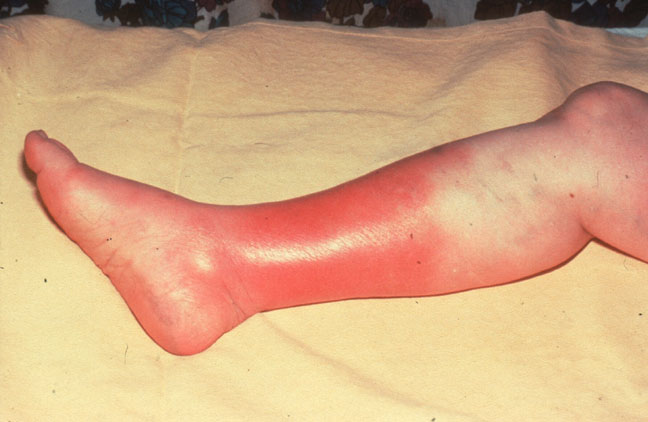It may seem like cellulitis is related to cellulites, but it is actually far different from that cosmetic problem many women are facing. Cellulitis is a common skin infection caused by bacteria. It can occur on the face and any other part of the body, although it tends to happen more frequently on the lower extremities.
Cellulitis often develops really quickly, causing the sufferer to experience pain as well as redness and inflammation in the affected area. Majority of cellulitis cases stem from an infected wound, insect bite or surgical incision. There are also a handful of factors that may put you at risk of cellulitis, all of which will be discussed later on.
While the surface of the skin may be the one affected, it is possible for the infection to spread to the underlying tissues. In, fact, cellulitis that is left untreated may actually spread to the blood stream, lymph nodes and even bones. This is the reason why some cases of cellulitis can be life-threatening!
Let us take a closer look at some of the things that you should know about cellulitis:
Causes and Risk Factors
This medical condition strikes when bacteria enters the skin through a crack or cut. Staphylococcus and streptococcus bacteria are the most common culprits behind the infection.
There are also certain risk factors that increase your chances of having cellulitis. One of them is having a skin condition that usually causes an opening in the skin, permitting bacteria to enter. Some examples include athlete’s foot and eczema. Having a weakened immune system is of course a risk factor because your body’s defense against invading bacteria is not in an optimum condition. Experts say that having a history of cellulitis puts you at high risk of having it again.
Signs and Symptoms
Many of the various signs and symptoms of cellulitis are similar to the ones you encounter when you have an inflamed scrape or wound. You will notice that the infected break in the skin is red, swollen and warm to the touch. You may also notice skin rash or sore that grows really quickly. It’s not unlikely for you to have fever.
Some of the signs and symptoms of a more serious case of cellulitis include fatigue, malaise, chills, achy muscles and sweating. Feeling drowsy or lethargic may indicate that the infection is spreading. In such instance, it is important to be seen by a doctor to receive prompt diagnosis and treatment, avoiding the possible complications.
Complications of Cellulitis
It is possible for the bacteria behind cellulitis to get to the bloodstream and lymph nodes, causing the easy spreading of the infection to the other parts of the body. Some of the probable complications of this medical condition include sepsis (blood infection), osteomyelitis (bone infection) and lymphangitis (lymphatic system infection).
Medical Treatment
Usually, a doctor will prescribe oral antibiotics to be taken for about a couple of weeks. It is very important to have all the antibiotics to be consumed even if the signs and symptoms of cellulitis have already improved. Otherwise, it’s possible for stronger strains of bacteria to develop, requiring higher doses of antibiotics in order for them to be killed off.
It’s not uncommon for cellulitis to go away in 7 to 10 days after the administration of antibiotics. Of course it will also depend on the severity of the infection as well as the current health condition of the individual. Longer treatment may be warranted if cellulitis is not improving as expected. Such can be due to some factors such as having a weakened immune system caused by certain medical conditions.
There are instances when antibiotics delivered intravenously may have to be administered. This is commonly recommended if the person with cellulitis does not respond very well to oral antibiotics.













